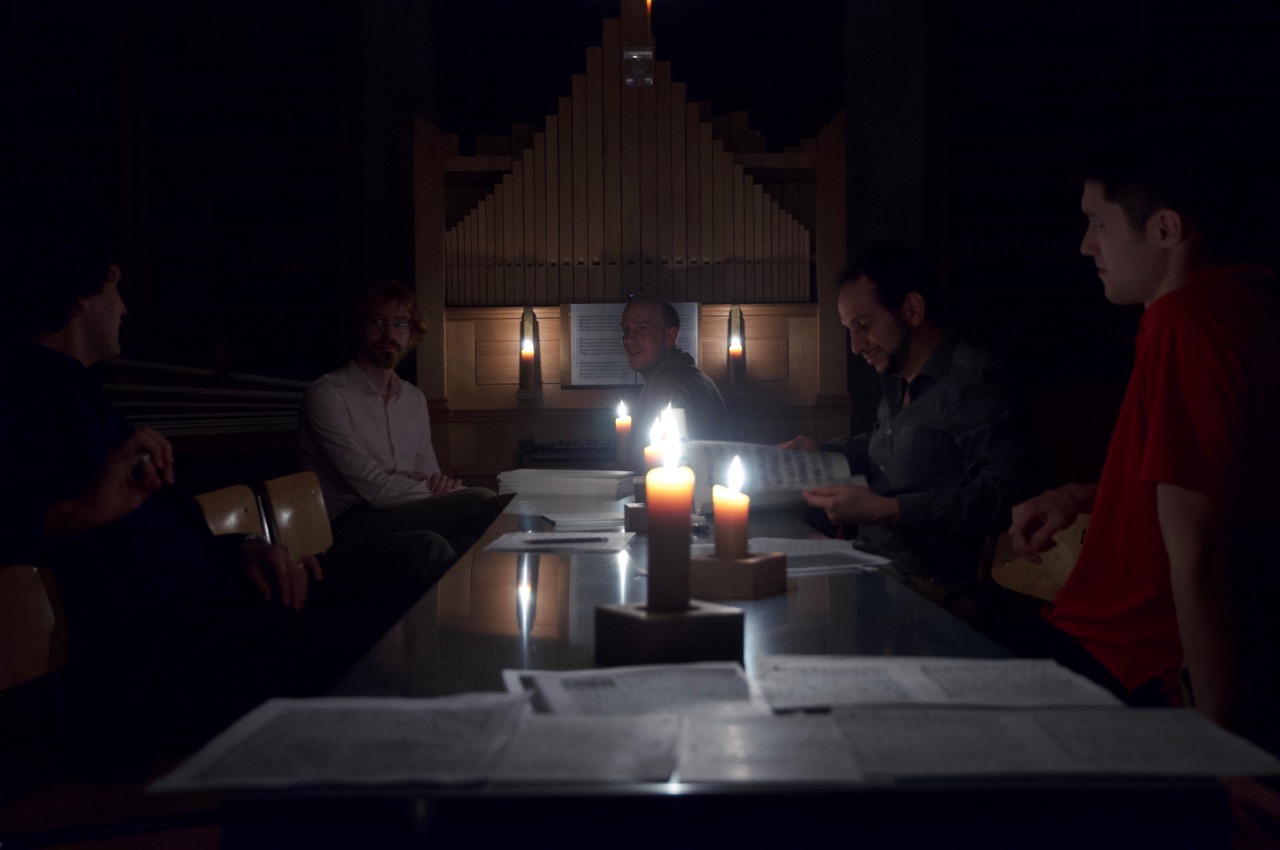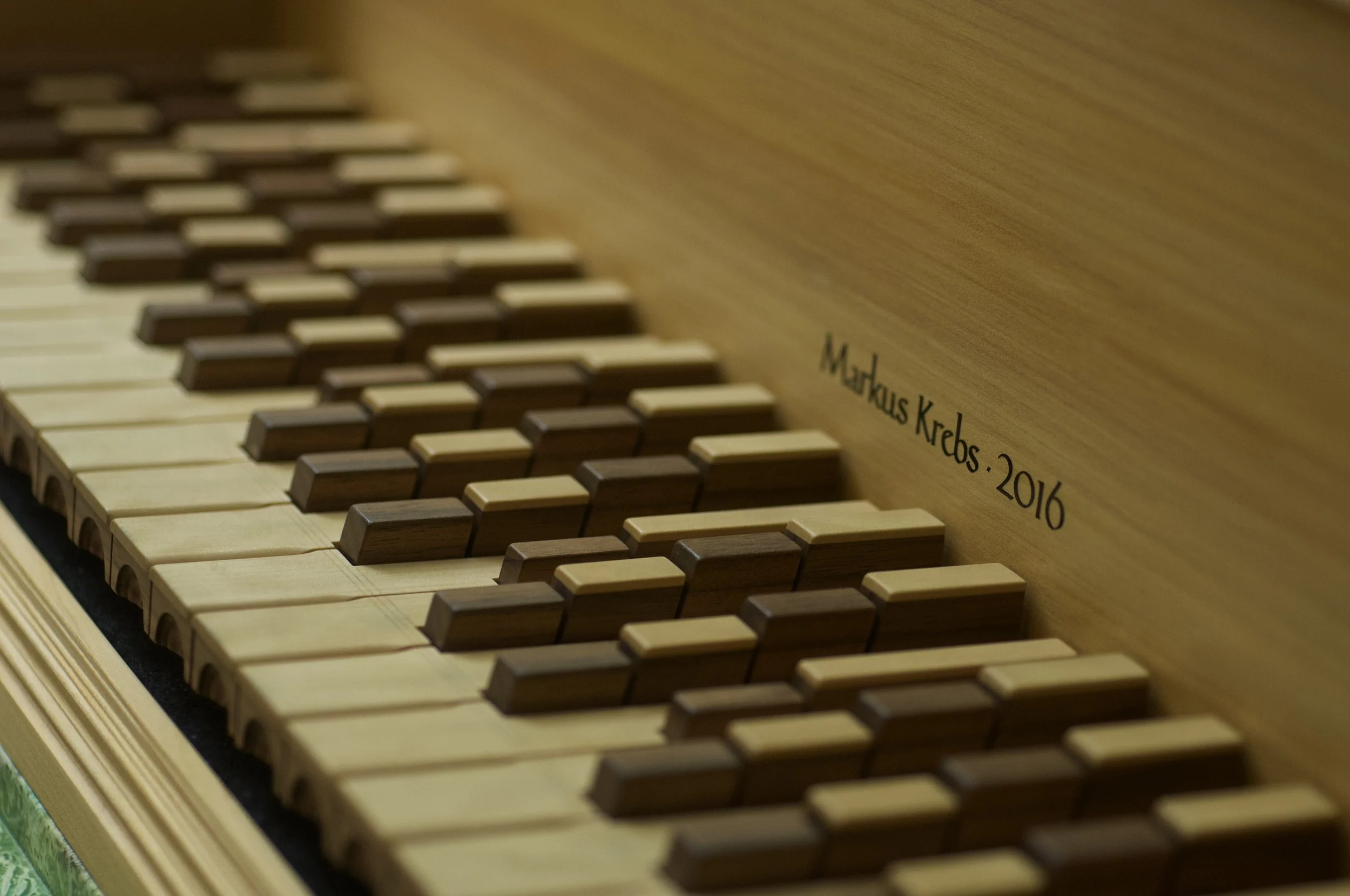Madrigali
The spatial situation is defined by an ephemeric architecture, the arciorgano, and a long table for 12 persons. The audience is invited to join the singers at the table. The ensemble performs highly complex chromatic and enharmonic madrigals from the late 16th and early 17th century. Conversations between the pieces give the audience additional informations about the music and its context.
Additional material is available on request.
Domus Artis, vocal ensemble
Johannes Keller, arciorgano
Michael Kleine, staging
The 31-fold octave
This concert programme mirrors historical compositions from the late 16th and early 17th century with improvisations by the jazz pianist Hans Feigenwinter. One of the main pieces is Pietro della Valle's "Oratorio della santissima purificatione" for five solo voices and a basso continuo group tuned in 31edo (31 pitches per octave). In our performance we use the clavemusicum omnitonum, the arciorgano, a violone panarmonico and an enharmonic harp as continuo instruments. Feigenwinter uses the clavemusicum omnitonum and the arciorgano for his improvisations.
Additional material is available on request.
Lina Lopez, Florencia Menconi, Breno Quinderé, Ivo Haun, Guglielmo Buonsanti, voices
Johannes Keller, arciorgano
Christoph Prendl, clavemusicum omnitonum
Vera Schnider, harp
Fred Uhlig, violone panarmonico
Smallest Intervals
This concert programme mirrors chromatic madrigals by Michelangelo Rossi and Sigismondo d'India with traditional songs from Serbia. Hayden Chisholm connects the two worlds with saxophone improvisations. Both vocal traditions use highly complex intonation systems, and are highly emotional in their effect.
Additional material is available on request.
Domus Artis, vocal group
Dragana Tomic, vocal group
Hayden Chisholm, saxophone
Johannes Keller, arciorgano
Improvisations
Vera Schnider / Johannes Keller
Keyboardist Johannes Keller and harpist Vera Schnider explore the possibilities of the Studio31+ instruments (Arciorgano and Clavemusicum Omnitonum) in combination with the triple harp. These instruments unlock new perspectives on keyboard and polyphonic repertoire of the early 17th century. Arrangements of otherwise unplayable pieces will be developed especially for this concert programme.







